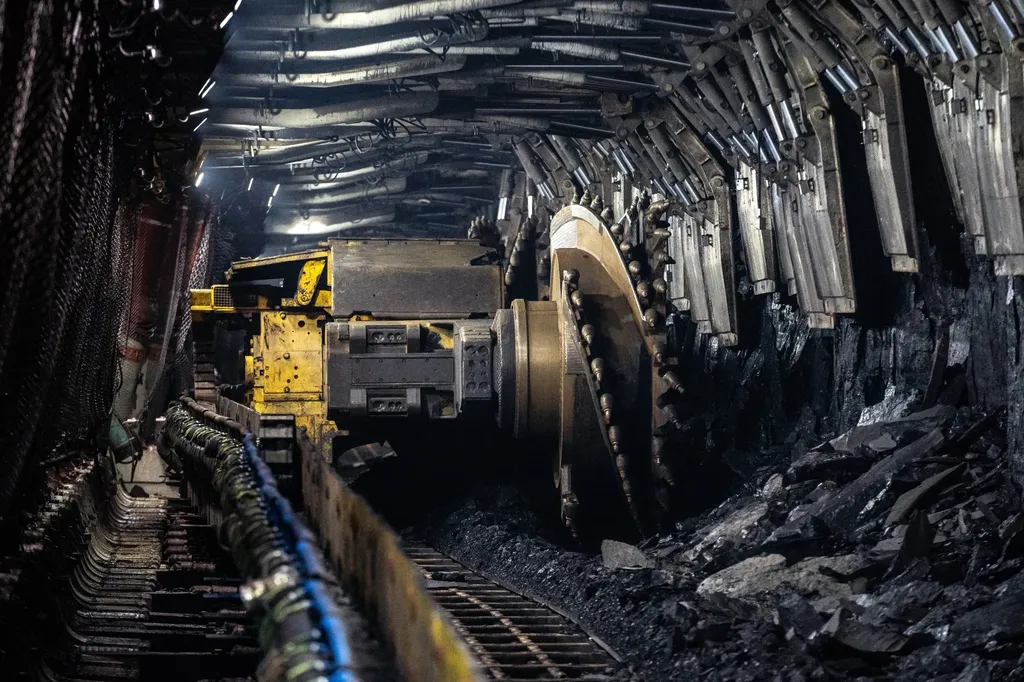In the heart of China’s coal mining industry, a technological revolution is underway, promising to transform the way dust is managed in underground roadways. Researchers at the CCTEG Coal Mining Research Institute in Beijing have developed an advanced roadway dust cleaning robot, equipped with cutting-edge technologies that could significantly enhance safety and efficiency in coal mines worldwide. This innovation, detailed in a recent study published in *Meitan kexue jishu* (translated to *Coal Science and Technology*), addresses longstanding challenges in the industry, including low automation levels, high water consumption, and ineffective dust cleaning.
The robot, a marvel of modern engineering, is designed to autonomously monitor dust accumulation, navigate complex underground environments, and adapt its cleaning operations to varying conditions. At the core of this innovation is a vision-based continuous monitoring system that uses an embedded edge AI dust accumulation image sensor. This sensor, developed on the HiSilicon HI3519A platform, captures the spatial distribution and patterns of dust in roadways. “The YOLOv8 classification model allows us to train a production dust accumulation heat map, which helps us accurately recognize different types of dust and measure their thickness,” explains lead author Huaiwei Ren. This precision is crucial for targeted and effective cleaning.
Navigation and positioning are equally critical in the underground maze of coal mines. The robot employs SLAM (Simultaneous Localization and Mapping) technology, integrating multiple sensors such as visible light wide-angle cameras, telephoto infrared cameras, laser lidar, and millimeter-wave radar. Combined with inertial navigation and auxiliary positioning methods like UWB, IMU, and wheel speed sensors, the robot achieves three-dimensional positioning and navigation. “This ensures that the robot can safely and efficiently navigate the roadway sections and directions,” Ren adds.
The robot’s versatility is further enhanced by its “vehicle-arm” collaborative system. A kinematic model for the robotic arm allows for precise control and adaptive disturbance rejection, solving complex operational challenges. The robot’s flexible multi-mode adaptive control strategy enables it to handle various dust cleaning tasks with high precision. “The combined action mechanism of multiple dust cleaning methods allows us to propose an efficient water-saving adaptive dust cleaning strategy,” Ren notes. This is particularly important for the energy sector, where water conservation is a growing concern.
The prototype of the adaptive roadway dust cleaning robot has already demonstrated impressive capabilities in ground tests. It can flush and wipe the roof, floor, walls, and pipelines of roadways, achieving autonomous obstacle avoidance and cooperative control. With a driving speed of over 2 meters per second and a climbing ability of 14 degrees, the robot is designed to operate in roadway sections ranging from 16 to 25 square meters and has a continuous operating range of over 1,000 meters. “The flexible obstacle avoidance and explosion-proof robotic arm has a rotation range of 360 degrees and an adjustable height of 0 to 5 meters,” Ren explains, highlighting the robot’s adaptability.
The implications of this research are vast. By reducing the number of underground auxiliary workers and mitigating occupational health hazards, the robot plays a crucial role in enhancing worker safety. For the energy sector, this innovation could lead to more efficient and sustainable mining practices, ultimately lowering operational costs and improving productivity. As the coal industry continues to evolve, technologies like this dust cleaning robot will be instrumental in shaping a safer and more efficient future.
The study, published in *Meitan kexue jishu*, underscores the potential of advanced robotics and AI in revolutionizing traditional industries. As Huaiwei Ren and his team continue to refine and develop this technology, the coal mining sector stands on the brink of a new era, where automation and precision engineering pave the way for a more sustainable and safer future.

